Contents
About Dorset and the New Forest
Welcome to Dorset and the New Forest – secret treasures of southern England

Come and visit our region and discover 150 km of breathtaking coastline covering mainly the Jurassic Coast, the only natural site in England classified as World Heritage by UNESCO, the ancient hunting grounds of the New Forest National Park and some of the most picturesque countryside in the country, much of which has been officially designated an area of outstanding natural beauty.
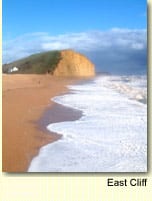
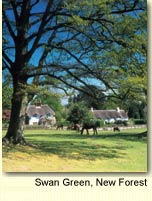

If you desire active holidays, you can go hiking along miles of footpaths or cycle paths, or enjoy the excellent water sports facilities in the region, which will host the sailing events of the Olympic Games in 2012. If you are interested in local heritage, the region abounds in historic houses, gardens, old castles and fortresses. You can join in the activities of seaside resorts and coastal ports, or simply recharge your batteries amidst beautiful landscapes, charming villages and towns.
Easily accessible from London and many British airports and ports, and benefiting from a mild climate, Dorset and the New Forest are a wonderful region to explore at any time of year.
Coast & Countryside – The Dorset Coast
Dorset and the New Forest’s unique landscapes and coastline cannot help but make a powerful impression on the visitor.
The New Forest heathlands and forest are in essence unchanged since they were given special protected status as a hunting ground by William the Conqueror over 900 years ago. The ancient system of Verderers (judges), Agisters (police) and Commoners set in place to run the New Forest still exists today, and Commoners still have rights to graze their livestock – normally ponies, sheep and cattle – on Forest land; hence the famous New Forest ponies. In fact, only about half of the New Forest is actually woodland, and it is of two types: Ancient and Ornamental Woodland, and timber Inclosures. The remainder is open heathland, which bursts with colour in the summer and autumn months. To the south, the New Forest runs down to the coast, offering views over the Solent and over to the Isle of Wight.
The neighbouring county of Dorset is an area of unspoilt and wonderfully varied rolling downland and heaths, hidden valleys, ancient field patterns, beaches and cliffs. Dorset is renowned for the diversity of its geology and wildlife, and just over half of the county is protected and designated within two Areas of Outstanding Natural Beauty. The varied rock strata running in broad bands across the county give rise to the distinct character of the countryside, which ranges from clay vales (the Blackmore and Marshwood Vales) to chalk downland (the Dorset Downs and Cranborne Chase) to the tertiary sands and gravels (Purbeck and East Dorset heathlands). Most of the towns and villages located in these areas reflect, through their local stone and other building materials, the character of the area.
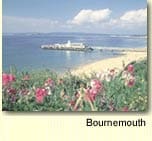
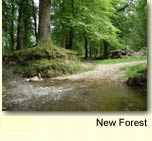
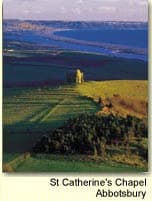
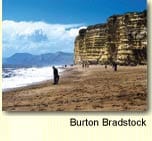
In 2001, the Dorset Jurassic Coast from Lyme Regis to Poole Harbour, together with the East Devon Coast, was awarded prestigious World Heritage Status, a recognition of its outstanding geology: a complete record of almost 200 million years of earth history during the Triassic, Jurassic and Cretaceous periods. From West Dorset beaches scattered with fossils, to Lulworth Cove’s ancient fossil forest and folded rock formations, and even dinosaur footprints, Dorset is a geologist’s and fossil-hunter’s paradise, and has been the source of some of history’s greatest geological discoveries.
The Charmouth Heritage Coast Centre and Lyme Regis Philpot Museum offer plenty of information and ideas, along with further displays all along the coast, at Lulworth Visitor Centre, Durlston Country Park, Swanage Heritage Centre, Kimmeridge Bay Marine Centre, Langton Matravers Museum, the Tythe Barn Museum in Swanage, the Castle View Visitor Centre at Corfe Castle and the Square and Compass pub at Worth Matravers.
One of Dorset’s most unique features, Chesil Beach, a long shingle beach created by the tides and currents, runs the length of the coastline from Abbotsbury to Portland, separating the open sea from a lagoon known as The Fleet. While unsafe for swimming, there are good walks along the length of the Beach and superb views from the overlooking hills. The ‘Isle’ of Portland, at the eastern end of Chesil Beach, is the home of Portland Limestone, one of Britain’s most famous building stones, and its unique quarry sites contain a fascinating mixture of geology, industrial archaeology, sculpture and wildlife: Tout Quarry contains a sculpture park and is a great place to explore. Displays and information are available at The Chesil Beach Centre, Portland Bill Visitor Centre and Portland Museum, while the Portland Sculpture Trust runs workshops in Tout Quarry during the summer. At the extreme eastern end of the World Heritage Coast lies Poole Harbour, Europe’s largest natural harbour, home to numerous wildlife species and habitats including the famous Brownsea Island, now owned by the National Trust and open to the public.
Dorset and the New Forest’s climate and geology have led to the existence of a number of unique and internationally recognised wildlife habitats and ancient human settlements. With over 140 Sites of Special Scientific Interest and over 1300 sites recognised for wildlife value, outstanding wetlands designated Ramsar sites under international convention, including Chesil Beach, Fleet Lagoon, Poole Harbour and the Avon Valley, together with sizeable populations of rare species such as the sand lizard, water vole and almost all species of bat – there are few other counties that match Dorset’s tremendous biodiversity.
Trails
For those interested in heritage houses and gardens, castles and forts, churches and abbeys or historical museums. Dorset and the New Forest has an abundant supply, ranging from pre-historic times to the 20th century.
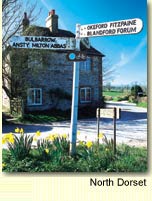
Click on a sub menu, under the Trails button, to find out more information about the following:- Towns & Villages, Historic Houses & Gardens, Castles & Forts, Museums, Iron Age & Roman Trails, Literature & Film Trails, and Smugglers & Shipwrecks.
Outdoor Activities
Dorset and the New Forest offers fantastic opportunities for outdoor leisure. Our stunning coastline and protected bays and harbours offer some nationally renowned locations for watersports such as windsurfing, scuba diving, sailing and fishing. Along the coastline and inland, the walking trails are second to none and offer a very real opportunity to get away from it all. Cyclists are well catered-for with a range of short and longer cycle trails, from ‘easy’ to ‘challenging’. Horse riders are offered some truly wonderful routes, and an extensive range of bridlepaths well away from any built areas or busy roads.
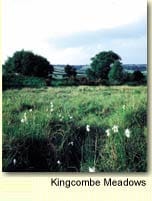
Click on a sub menu, under the Outdoor Activities button, to find out more information about the following:- Watersports, Fishing, Riding, Golf, Walking and Cycling.
Beaches & Resorts
Whether you are after a quiet stroll along a secluded beach or a lively, busy resort, Dorset and the New Forest has an unrivalled range of outstanding beaches and buzzing resorts to choose from.
The Dorset coast is renowned for its clifftop walking, but is also well provided with beaches. Whether you are after the wilder shingle beaches of Charmouth and Lyme Regis, or the gentle sands of Studland, you will find something to suit you. All the beaches have parking close by.
The beaches at Lyme Regis and Charmouth, overshadowed by some of the tallest cliffs on the south coast, are renowned for their fossil treasures. Particularly in winter, the rough seas which have shaped the Jurassic coast uncover sometime dramatic finds. Care is needed as wet weather can make the cliffs unsafe. Both towns have become well-known centres for fossil-hunters and the Charmouth Heritage Centre and Lyme Regis Philpot Museum both contain information.
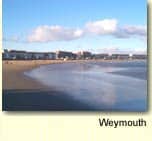
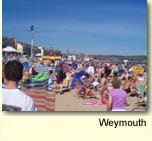
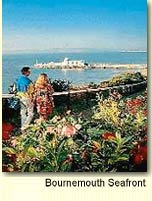
A little along the coast from Charmouth, Seatown is a quiet haven for walkers and those wanting some solitude, in the lea of Golden Cap, the highest cliff on the south coast. West Bay itself is a small fishing port.
From Burton Bradstock eastwards until Portland, the long shingle beach of Chesil Beach, a natural phenomenon formed by sea currents, dominates the coastline. The strong tides make this entire stretch too unsafe for swimming or boating, but this is an excellent spot for fishing.
Ringstead is a protected shingle beach overlooking Weymouth Bay. Safe for swimiming, this is a popular beach for those wanting a quieter beach away from the resort of Weymouth.
The beaches around Durdle Door and Man O’ War Cove are safe for swimmers and very good for snorkelling, as is Lulworth Cove.
Studland is the picture book sandy beach, accessed from the car park though sand dunes and waving grasses onto a wide and safe sandy paradise, with good swimming and no strong currents.
Bournemouth current England for Excellence Resort of the Year offers the best of a traditional resort alongside a vibrant, bustling town centre. 7 miles of beautiful sandy beaches, award-winning gardens, good shopping and top entertainment contribute to making Bournemouth well worth a visit. The Russell-Cotes Art Gallery and Museum provides an Eclectic mix of curios and art from around the world in a unique clifftop Italian style mansion.
www.bournemouth.co.uk
Christchurch is an ancient Saxon town overlooking a picturesque harbour, in the shadow of a magnificent 11th-century priory. Mudeford and Barton on Sea both offer a quiet sea-front location and the traditional English seaside sights of beachhuts and deckchairs.
www.christchurchtourism.info
Poole and Sandbanks have become in recent years the new chic venue on the south coast. Poole old town and quay are scenically located on the shores of Poole Harbour, Europe’s largest natural harbour, where there are ferries over to the wildlife reserve of Brownsea Island as well as rather larger ferries across the Channel to France. Poole Pottery, Dorset’s most popular attraction, is located on the Quay, and Sandbanks offers mile upon mile of golden sandy beaches and quality hotels. Compton Acres Gardens offer an unforgettable visit for garden enthusiasts.
www.pooletourism.com
Swanage is a smaller resort on the stunning Purbeck Coast, not far from the famous coastal rock formations Old Harry and his wives, and Durlston Country Park. The town itself was formed in Victorian times and today can be reached not only by car but also by steam train from Corfe Castle.
www.swanage.gov.uk
Weymouth is a popular seaside town ‘founded’ as a resort by George III, who is remembered today as a giant chalk figure on his horse carved into the hillside on the way out of Weymouth. Set in a scenic bay, Weymouth has two miles of sand and shingle beaches, an elegant Georgian seafront and an attractive harbour lined with restaurants and pubs.
www.weymouth.gov.uk
Local Flavour
Dorset and the New Forest is a food lover’s dream. Hearty local produce, ranging from fruit and vegetables to pork and apple sausages, from jams and marmalades to Dorset Apple Cake and Knob biscuits, is readily available at one of the many Farmers’ Markets held throughout the year. These markets offer the perfect opportunity to meet some of the local characters that help to make Dorset and the New Forest such a special area. Many farm and cottage producers also have a farm shop which can be visited by prior arrangement.
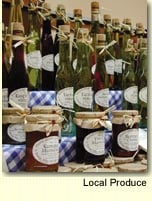
Each market town in the area also has a set market day, when the town buzzes with activity as local traders bring their wares to town. Wimborne Minster’s weekend covered market is the largest in the south, and Dorchester’s Wednesday market is also well-known and widely-attended. In the New Forest, Lymington’s Saturday market is popular.
Dorset and the New Forest is also home to some local Real Ale breweries, among them Hall and Woodhouse (‘Badger’ beers) and Eldridge Pope (‘Thomas Hardy’ Ale). The Hall and Woodhouse Brewery in Blandford Forum, Ringwood Brewery, and Palmer’s Brewery in Bridport, are open to visitors at certain times. Each brewery also owns a chain of pubs throughout the area and elsewhere in the UK, which serve the local brew.
Those who wish to buy local souvenirs need look no further. There is a large and very active number of local artisans and craftsmen in the area, ranging from potters and painters to furniture makers and decorators.
